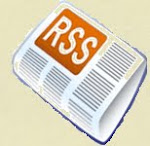
There are a lot of business
books on discovering your strengths and learning your all encompassing traits.
I took the Strength's Finder's test five years ago. It told me this:
- I was: Strategic
- Input
- Intellection
- Ideation
- Maximer
- Responsibility
Hmmm. Luckily for each identifier, it provided a paragraph of explanation. Pulling a collection of characteristics from the various pages, it told me this:
- I see patterns for solution or development
- I am intrigued when seeing disparate phenomena can be linked by an obsure or hidden connection
- I like learning new things and collecting information
- I like to stretch and challenge myself intellectually
- I seek people who draw on their strengths and am not satisfied with average
- I am dependable always striving to do what I say i will
Not bad.
It only seemed to
scratch the surface however and didn't really offer more information how to put these strengths to use or market my ability. Many books and organizations can get close to the above information - and surprisingly so with their quick multiple choice questions - but they don't tell you what's next.
I have a feeling that's because for every person, the "what's next" is very different, right?
This is what got me more interested in partnering with
Emotional Intelligence. Frank, creator of
Pi3™, places your strengths within the context of where they exisit. Your strengths
manifest in a few places: within the processing power of your brain (
thinking), with (
feeling), and in executing tasks (
doing). These moments tie directly to when you're by yourself, with others, in large groups, and within the community and world at large.
Your strengths are anchored within a matrix that is very much your own where they are exhibted uniquely.
What should we do about it?Here comes the fun part and how Frank and I work together. Remember from above where "I see patterns and am intrigued by disparate phenomena"?
Yeah, I solve problems.I connect the dots and see gaps not apparent to others.
Through understanding of your
goals and
how you work now, I can outline a plan and identify the next steps needed for you to go
forward successfully. Frank tunes my suggestions for your unique character to make
how you'll work be better for you - easier, enjoyable, excelling.
You won't do something if it seems like a chore. You for sure won't do it right away. You want to work within your realm, withing your hardwired strengths. It's natural. Human. It's right.
Contact
me to learn more.





